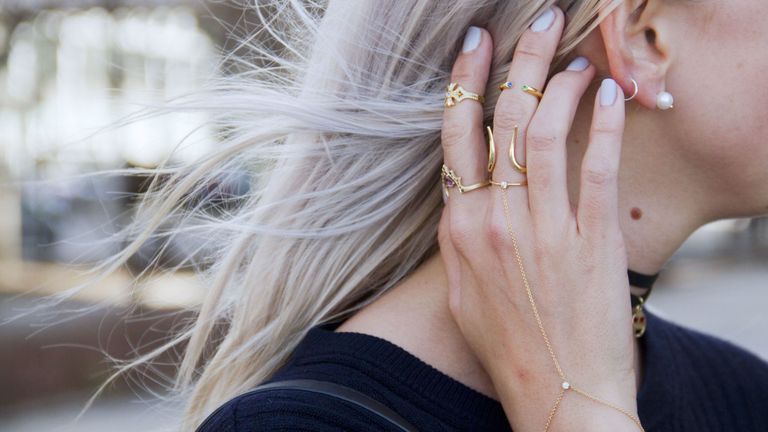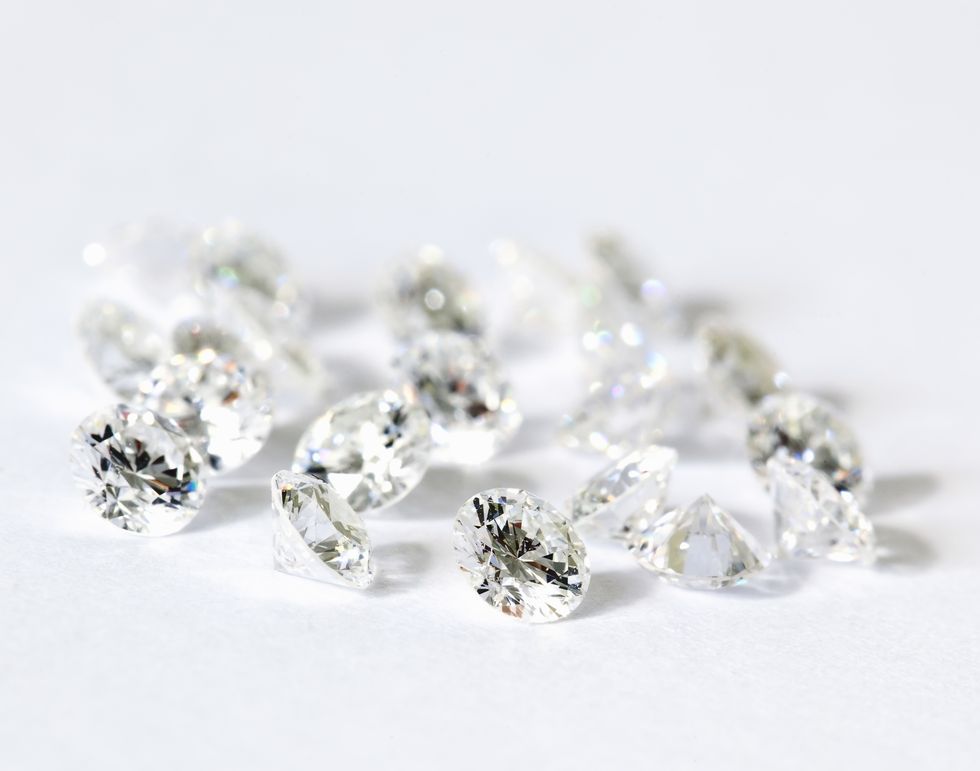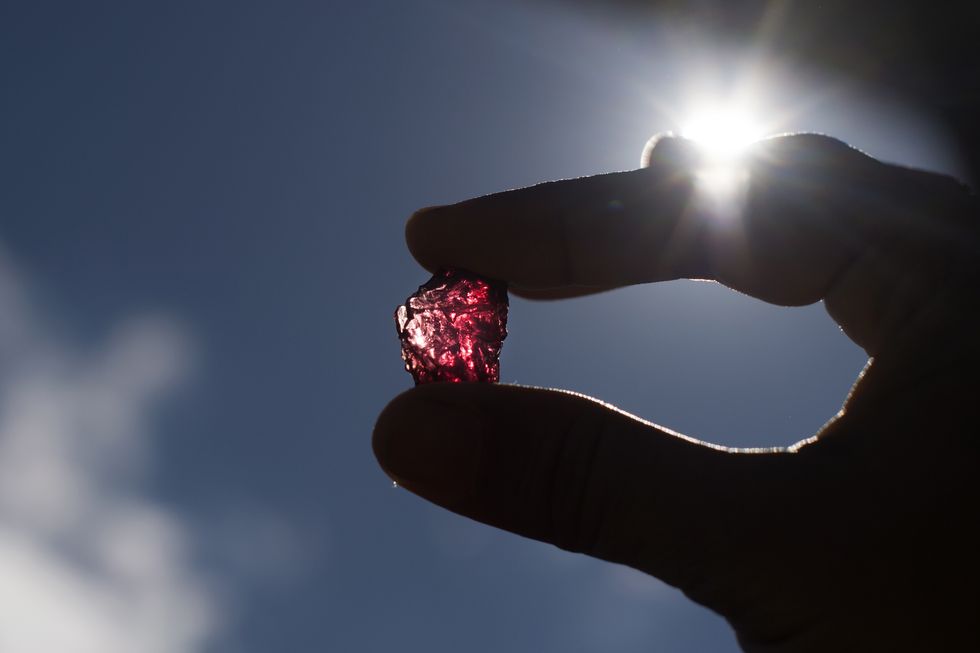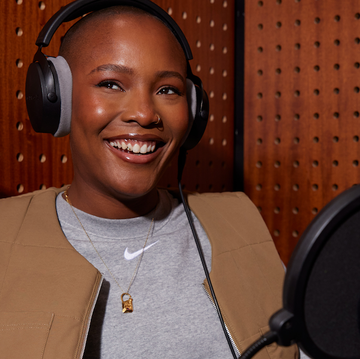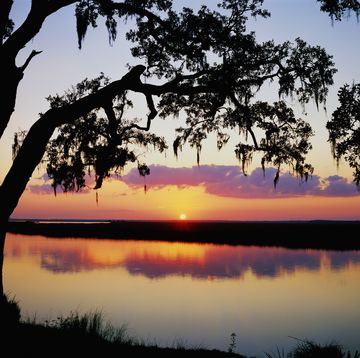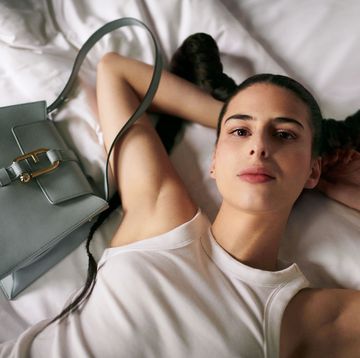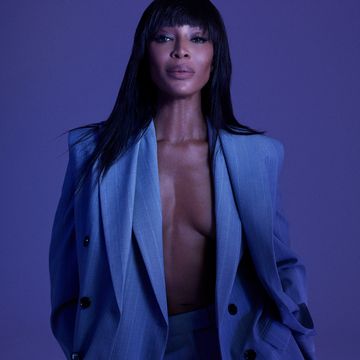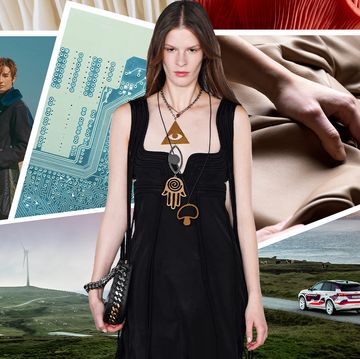Thanks partly to Paris Hilton and the Ab Fab ladies, excessive opulence was everywhere during the '90s and early '00s. The "bling" mentality was the cultural norm – and, when it came to jewellery, many consumers were more concerned with the status it brought them than where the stones were sourced.
But over the past decade, the tides have been turning. Our stronghold on materialism has relaxed, making way for a generation that's favouring more considered purchases.
When it comes to jewellery, that added consideration has led to an increased demand for ethical gemstones. If you saw the 2006 film Blood Diamond and began to question your own jewellery collection, you're not alone. The impact from the Leonardo DiCaprio drama seemed to add to a conversation that was already gaining traction. More and more women were receiving the message: our jewellery decisions matter.
"People are demanding transparency and brand accountability," explains Livia Firth, the founder and creative director of EcoAge, a consultancy company supporting sustainable business across the developing world (and wife of actor Colin Firth). "It's not right anymore not to know. For jewellery, we should ask more questions."
To find out more, we decided to do exactly that – ask more questions.
What does 'ethical jewellery' actually mean?
If you've ever been guilty of just nodding along when the word "ethical" is thrown out in conversation - without actually understanding the usage – then raise your hand. Us too. But, most often, the issues focus on three things: treatment of the workers, effect on local communities and environmental impact of the mines.
For Gemfields, these three pillars are paramount. It is one of the world's leading suppliers of responsibly sourced coloured gemstones, specialising in the mining and marketing of emeralds, rubies and amethysts from sustainable mines. The company is committed to greater "legitimacy, transparency and integrity" in the industry.
But mining coloured gemstones presents a unique set of challenges in terms of meeting that goal. The relative rarity of rubies and emeralds, compared to diamonds, makes identifying sources that are commercially viable a challenge – and large-scale production is almost impossible.
Coloured gemstone mining is on a much smaller scale, across 47 countries – and that can make it harder to regulate the mines' working practices. Those that are poorly run may exploit workers and damage ecologically fragile areas. For example, washing the gemstones in rivers causes sediment build-up, which harms the eco-system, and forests are often destroyed to locate more mining sites.
That's why companies such as Gemfields are committed to sustainability and prioritise responsible mining practices. "We are a mining company," says Jack Cunningham, who heads up sustainability, risk and policy at Gemfields. "Unlike most of the coloured gemstone sector, which is still largely fragmented, unregulated and artisanal, we are a highly organised, industrial and regulated business; complying with health and safety laws, paying taxes to the countries where we operate and working with manufacturers to set benchmarks around best practice."
Gemfields minimises environmental damage by "backfilling" — refilling at the same time as mining and replanting over the topsoil to minimise impact.
For the community of the Kagem emerald mine in Zambia, Gemfields built a school and health centre. They've also invested in wildlife conservation and created farming associations, so that when the mining finishes, locals will still have work.
"Since 2010 we have invested nearly $3.5million in our community projects," says Cunningham.
Why is the conversation building now?
The word may be slightly clichéd by now, but there's no denying the meaning: Millennials are the most "woke" generation to date. On everything from human rights to environmental concerns, they seem to care more, on average, than previous generations.
"I've always been socially and environmentally conscious," says Isabella Silvers, a 25-year-old writer from London. "My friends and I proudly call ourselves feminists, actively take steps to reduce our environmental impact and shop consciously. I feel like my generation are much more aware of the impact our choices have on the world, and there's no sign of that trend slowing down with Gen Z."
That may just be one millennial's opinion, but a 2016 report by the ratings body Ethical Consumer has uncovered a similar trend. The UK's ethical goods and services sector entered its thirteenth year of growth in 2015 and is now valued at £38 billion — twice the value of the tobacco market.
For many 20- and 30-somethings used to purchasing artisan food and ethical fashion, the cachet of owning a gemstone is diluted if it originated from a mine that exploits its workers or damages the environment.
"Consumers are, quite rightly, asking more questions around the provenance of the items that they purchase," says Elena Basaglia of Gemfields. "Jewellery is no exception to this and, indeed, as many gemstones are sourced from some of the poorest countries in the world, we feel it's important to make sure that the communities benefit."
Who's leading the charge?
Millennial consumers and young women around the world are taking part in the push for sustainability. Celebrities, too, are getting on board, with many socially aware actresses using awards season to promote a message of sustainability and charity, while starting a conversation about human rights.
Many stars showcased jewellery featuring Gemfields stones at the Cannes Film Festival, while Chopard launched its Green Carpet Collection in 2013 — the first high-end jewellery range made with Fairmined gold and ethically sourced stones.
Actress Ruth Negga was attracted to Gemfields because of their sustainable ethos and has spoken about how the issues resonate with her. At the Golden Globes this year, Ruth wore a 25.5 carat Gemfields ruby and continued the association at the 2017 Oscars, where as a nominee, she wore a headpiece made with 146 carats of Gemfields Mozambican rubies, set in blackened white gold.
Of course, most celebrities owe their glam looks to their stylists, so it helps that they're also becoming aware of the need to reflect ethical credentials on the red carpet.
"Sustainability is becoming more important in our industry," says stylist Aimee Croysdill, who works with A-listers throughout awards season. "I don't believe in [stars] wearing jewellery for jewellery's sake. Subtlety and simplicity is so important. Though it can often be tricky finding ethical high-fashion, I'm hopeful that will change in the not-so-distant future."
And Livia Firth continues to do her part. "It is fundamental to work with trusted suppliers," she says. This is part of the Journey to Sustainable Luxury- Chopard's business strategy to address some of these thorny issues.
"We worked in partnership last year with Gemfields featuring responsibly sourced emeralds from the Kagem mine in Zambia, which EcoAge went to independently validate."
What can we do to contribute?
The most obvious way you can join the movement is by looking for sustainable gemstones when making a jewellery purchase. But how can you be sure?
For a diamond, there are ways of ensuring you know exactly where it came from. "Alongside the Kimberley Process, traceability and assurance systems such as Forevermark and Everledger are being used," explains Cunningham.
The Kimberley Process began in 2003 and it is still recognised as the main way for the diamond industry to prove that the diamonds have come from countries free of conflict. But somewhat controversially, it does not act as a guarantee or provide actual proof of where the diamonds come from, other than as a certificated declaration.
Forevermark is another distinction of diamonds that are trusted to be conflict-free, natural and untreated. And Everledger is a secure ledger that records the supply chain of every gem with a strict certification in a digital vault (rather than a paper certificate that's easier to counterfeit).
But for coloured gemstones, it's not quite as black and white.
"Gemfields, jewellery buyers and the wider industry are working collaboratively towards international coloured gemstone standards," says Cunningham. "The biggest challenge lies in how the vast majority of coloured gemstones are mined."
According to some jewellers, there could be as many as 30 million artisanal miners, which includes around 2 million children. Clearly, this is an industry that's not policed globally; only where individual governments have regulations in place.
However, one thing you can do is buy from suppliers that are transparent about their mining processes. In addition to Gemfields, there's also nineteen48.com, which set up an ethical gem mining company in Sri Lanka. They now donate a percentage of their profits back to educational charities in Sri Lanka.
Bulgari is a member of the Responsible Jewellery Council, founded in 2005, to promote responsible practices across the diamond and gold supply chain.
Tiffany, too, is living up to that promise. It's one of the first luxury jewellers to focus on supply-chain issues and to source its gemstones from responsibly run mines, refusing to source from countries that have a poor record on human rights.
The luxury goods consortium LVMH is also committed to sustainability. It has a dedicated environmental department, which has worked across the group for 25 years to ensure that goods are sourced sustainably.
For May Stanshall, 29, the decision to do a bit of research before making an important jewellery purchase was an obvious one.
"I would never have bought my engagement ring without checking where the stone came from," says May, who visited an ethical jeweller in London last year to choose her emerald ring. "We had a long discussion about the mine it had come from and the sustainability of emerald mining, and we only went ahead with the purchase when we were sure. I'd say my friends all feel the same way — nobody wants to wear something every day that caused suffering or environmental damage."
When it comes to buying your own gemstones, the message is clear: always ask.
Gemfields is a world-leading supplier of responsibly sourced coloured gemstones and is committed to championing integrity within the coloured gemstone industry. See Gemfields' page on responsible and sustainable gemstone mining for more information.

